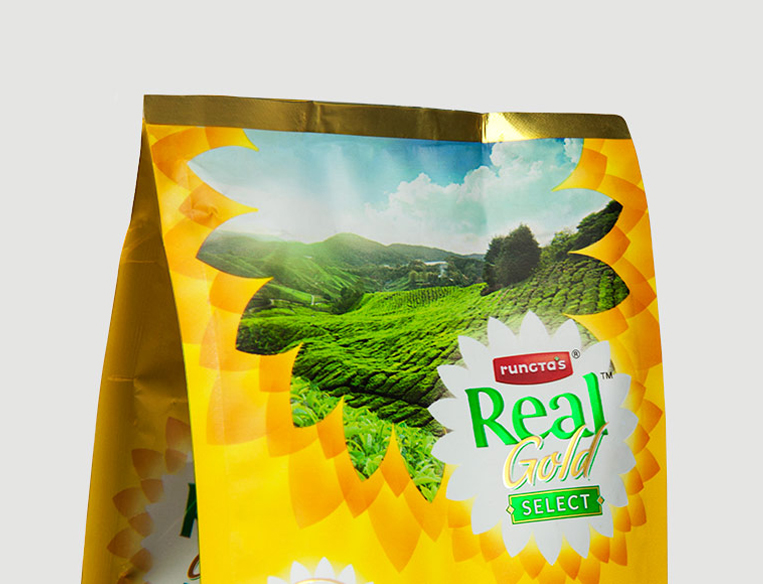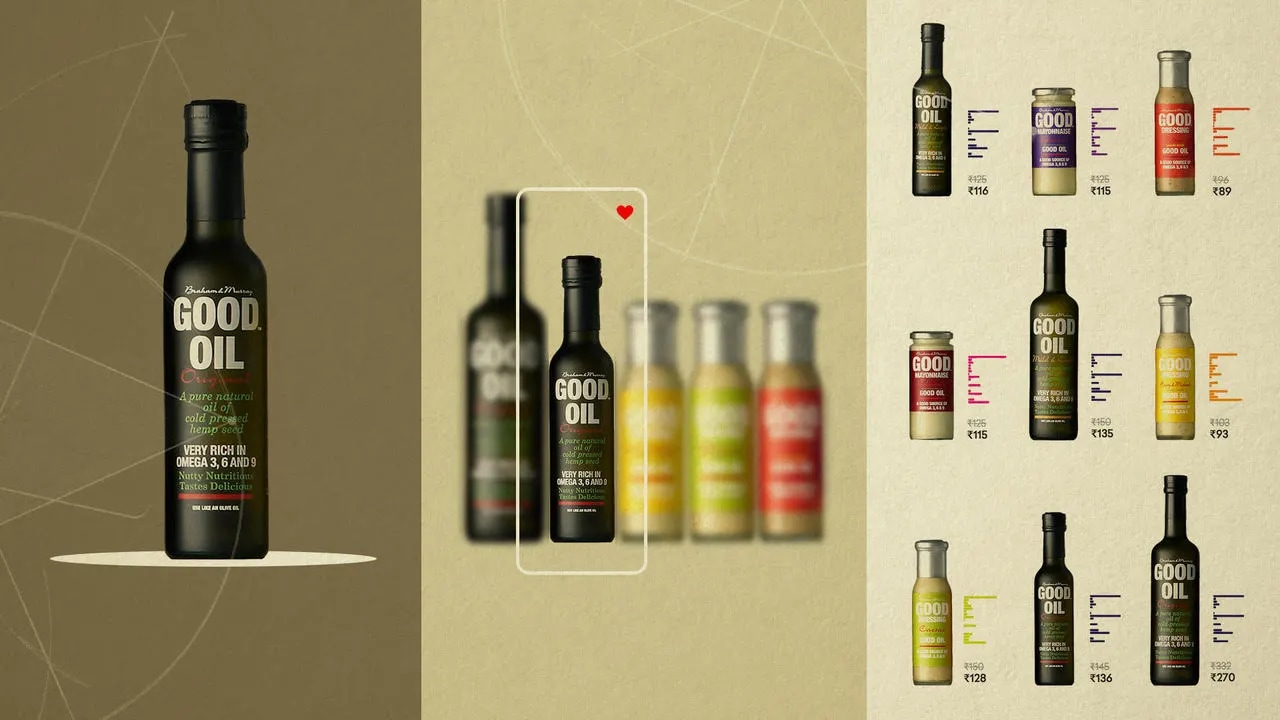Love In The Time of Packaging
“It looks like a particularly unhealthy time to be a brand,” said the Slayer of Ordinary Design, a sardonic, sage and street-wise guru known more usually as The Sood, or sometimes the SOD, a term, as he pointed out, for a piece of turf—grass, earth and all.
“First, “ said the Sod, easing into a chair at the barbershop he’d chosen for our chat, “someone suggested that the logo had done its time, (didn’t you write a column on that, too?*) and was no longer central to the brand’s identity. Now you tell me that the art and science of packaging design—the best way to tell a brand story without advertising— is under attack from e-commerce. And I’m not feeling so well either,” he said, pleased with his humour, and fingering the unfashionably grown stubble on his jaw.
“I suppose the argument is that you already bought it, naked, on Amazon, so what use are clothes now that I don’t need to persuade you all over again, right?” I nodded, agreeing that it was a crudely correct summary of the view I’d encountered (packs need to be clean and simple, and stand out on the webpage and the mobile phone).
Truth be told, he went on, there’s something to the charge. The internet and the culture of marketing it brings is making life harder for the marketing as a whole, and packaging too is a part of that. E-commerce strips your offering down to its objective essentials—you are a puny bunch of database entries. It emphasises price and facts, and turns it all into an entirely cognitive sale. You can’t be more than your product specs, and your brand vanishes in a click.
E-commerce strips your offering down to its objective essentials… You can’t be more than your product specs, and your brand vanishes in a click.
Also, it’s difficult to build a relationship with something you can’t touch, where a human isn’t involved, and which you can return minutes after you’ve bought it.
How different things were! he said, taking in his greying hair in the mirror. Until just two decades ago, we bought from a neighbourhood store, with a counter in the front and a deep shop that you couldn’t enter, what’s known as a General Trade outlet. Most of the packaging is too far away to influence you. You came with a specific need; exploration was forbidden.
Perhaps you asked for a brand, learnt from newspaper or TV ads, or from family tradition. The shopkeeper gave it to you, or slammed down his recommendation on the counter, and asked how many you wanted.
When the pack came, your lizard brain kicked in. You had to decide quickly. Behind you was the street and to either side, fellow shoppers pretending not to notice your squirming in uncertainty, some openly staring, some offering or asking advice. Unless you could think of a reason not to buy, the deal was done. Conversation was all but ruled out. Retailer influence was decisive. Advertising and distribution decided matters. The pack’s job was to match the picture in the ad; and then to reassure you via a checklist of benefits, on the front, and then on the back of the pack.
In a way, he said wistfully, general trade is somewhat like an arranged marriage. The elders know best, and you may only refuse or accept. By that analogy, e-commerce is sort of like a responsible dating site, but with more information (vital statistics perhaps). Your partner has a small photograph to showcase herself; comparison is mandatory, and the volume and variety of choice can be stultifying. Reviews from previous daters are conveniently available, but read them at your peril. Rejections (called returns) are easy and commitment is slight.
General trade is somewhat like an arranged marriage. The elders know best, and you may only refuse or accept…e-commerce is sort of like a responsible dating site, but with more information (vital statistics perhaps)…perhaps modern retail is like romance, the start of an affair?
But in this story, said the Sod, we have jumped from arranged marriages, or general trade, to a responsible dating site, or e-commerce. In doing so, we have flown over what must come in between the two: Modern Retail. This type of shop has been proliferating rapidly since about 2000. It is the format where packaging comes into its own. In our analogy, perhaps modern retail is like romance, the start of an affair?
It’s useful to compare the demands on packaging for the three formats. In modern retail, there is no hurry to buy a product; in e-commerce it can be postponed indefinitely. There is little crowding and none of the enforced socialisation from shoppers; you are not on test. Retailer influence is minimal. The lizard brain is quiet, and love can flower.

Shelf throw imperative to survive in the crowd. Premium finishes; texture and material can be powerful influencers
In general trade and e-commerce, large, clear brand units are necessary to survive reduction when they are reproduced on a web page, and in the case of general trade, in advertising. These packs must be photogenic. Modern retail allows a more relaxed approach to the ‘shelf throw’ imperative that dogs all packaging design discussions: you are closer to the pack. You can pick it up, feel its material, and finishes. Premium finishes have impact; texture and material can be powerful influencers.

Prominent, clear brand units are essential to survive reduction on a web page in e-commerce
In general trade and e-commerce, large, clear brand units are necessary to survive reduction…Modern retail allows a more relaxed approach to the ‘shelf throw’… You can pick it up, feel its material, and finishes; powerful influencers.
Taken together, these characteristics of modern retail allow an unhurried, deeper narration of the brand on the pack, allowing smaller brands to compete alongside larger ones. Also since your pack stands alongside its peers from the category, it needs to stand out from them, somehow getting to the essence of its proposition.

Modern retail allows an unhurried, deeper narration of the brand on the pack.
In reality, the demarcation between the three formats is not so simply acted on. For one, a pack, wherever bought, may begin a new life on another shelf: at home, in the bathroom or pantry. This is obviously true of, say, for example, a toilet cleaner, deodorant, or a Marmite jar. These can build relationships with their buyers anew. Even e-commerce presents the opportunity—and it is largely under-addressed— to impress the consumer at the point of receipt, when she beholds her date, once it emerges from the retailer’s protective packing. (The barber then took the hair apron off, and the Sod admired his new look in the mirror).
Equally, a product may be present in any two, or all three formats, so, never have the challenges or the opportunities of packaging been greater. Packaging design, under threat? It’s perhaps the strongest, and subtlest, means of turning consideration into conversion, to seduce the buyer into a long, meaningful relationship. Moreover, the pack is virtually the product, as I will explain another time.
______________________
First published in a slightly modified form ‘Love In The Time of Packaging’ in Business Standard, 24 June, in Deep Design, a fortnightly column by Itu Chaudhuri.

